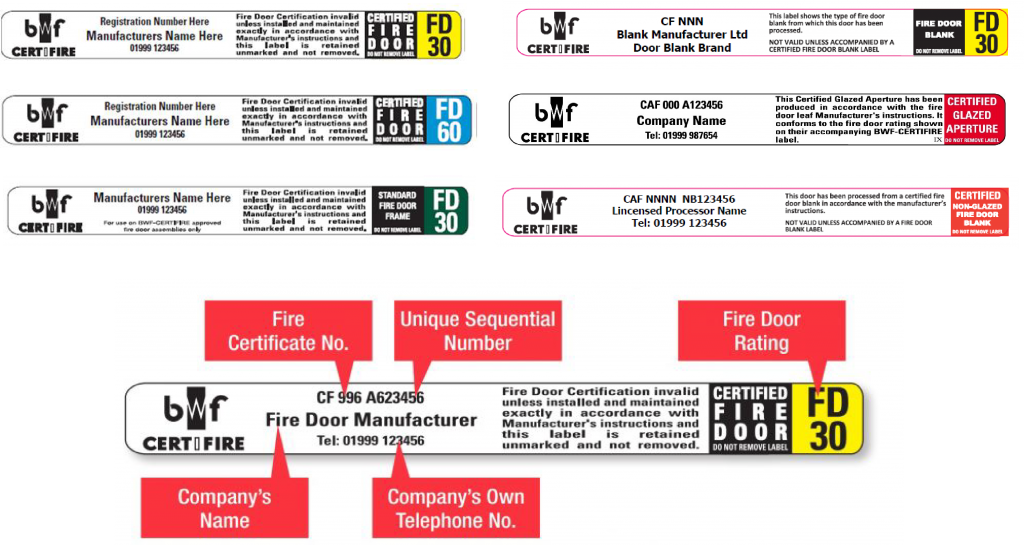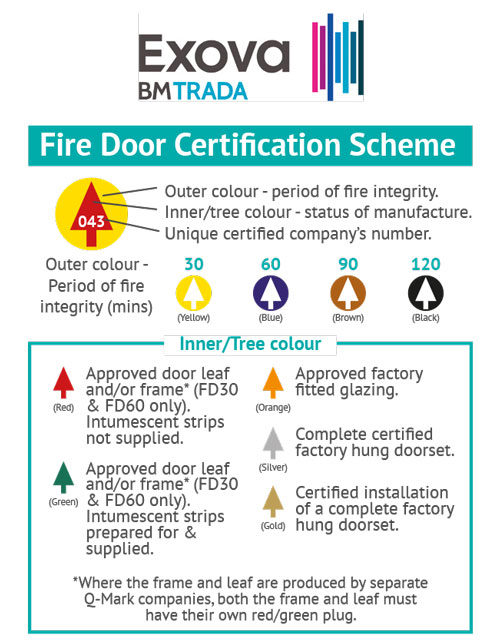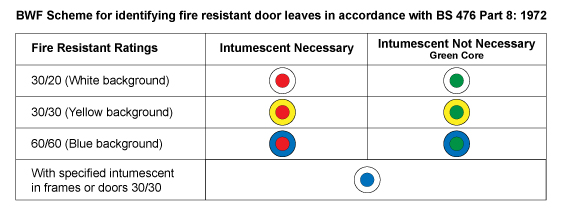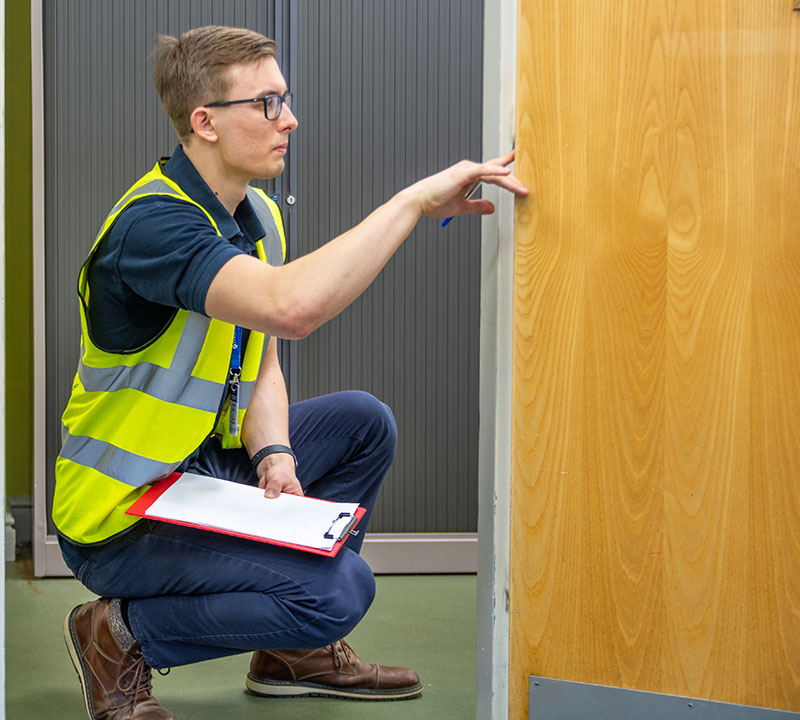Fire & Safety Solutions
CALL OUR TEAM NOW 0800 612 6537
Also FREE from UK mobiles
Free Delivery
on 100s of Products
Secure Payments
with our fast checkout
Online Support
Contact Us Now
30 Day Accounts
for Public Sector
5 Star Customer Feedback
Identifying Fire Doors
Many buildings contain fire doors for which the certification has disappeared (or never existed in the first place). This creates legal uncertainty for the owners and could put the people, contents and building itself in jeopardy if a fire broke out. So how do you identify a fire door and what if you can’t find any certification?

How do you tell if a door in your building is a fire door?
Look for the certification
Different fire door manufacturers mark their doors in different ways. If your door is certified by a third-party certification scheme such as BWF-Certifire, Exova BM TRADA Q Mark, International Fire Consultants or Loss Prevention Certification Board (LPCB), look for a label like the one pictured below:

This label will normally be placed on the top edge or the hanging edge of the door leaf. It tells you the manufacturers’ details and identifies the fire rating provided by the door if it has been installed according to the manufacturer’s instructions.
The label may also be accompanied by a coloured plug (pictured below), which indicates the level of fire protection.


No fire door certification can be found, what should I do?
In some cases, a fire door installed by someone who is not a competent installer may have had its label or plug cut off or painted over during installation. If this is the case, you may be able to find documented evidence in a log book or maintenance records of the installation work or door purchase. The performance of the fire door is however reliant on the door being correctly installed and so it is advisable to ask for a fire door inspection in these circumstances to check the integrity of the fire door.

If no records can be found for the door, it may be possible that the door has not been certified and therefore there is no evidence that it will provide any protection against fire. In this case, the door can be assessed to see if it can be classed as a nominal fire door.
What is a nominal fire door?
A nominal fire door is an existing fire door whose fire separation performance cannot be proven, but that is of a suitable build to provide sufficient fire protection. Making a judgement as to whether a fire door will give protection in the event of a fire may not be easy. The following checks can be made to assess the performance of the door:
- Door construction – The core material of fire doors can vary greatly and cannot easily be assessed. A solid timber door of at least 44mm of thickness which has no voids or apertures cut out and has been correctly installed and maintained could provide the necessary fire rating. The edges of the door must be lipped with hardwood and should have the correct intumescent seals
- Door maintenance – Check the door using our 6-step fire door checker to assess whether the door is properly maintained to fire door standards.
- Door alterations – Check whether any alterations have been made to the door including the addition of glazing, letterboxes, ventilation grilles or spy viewers. An alteration such as this increases the likelihood that the door would fail to prevent the spread of fire.
If you are uncertain about whether your door would perform as a fire door, it is often best to consult your risk assessment. If the door is in a key location on an escape route for example, we would recommend that the door is replaced with a new fire door or inspected by a qualified fire door inspector. In a less critical location, you may decide to keep the nominal fire door.
Reviewed: 29/03/2022 (doc:569 V1.0). Our articles are reviewed regularly. However, any changes made to standards or legislation following the review date will not have been considered. Please note that we provide abridged, easy-to-understand guidance. To make detailed decisions about your fire safety provisions, you might require further advice or need to consult the full standards and legislation.




















